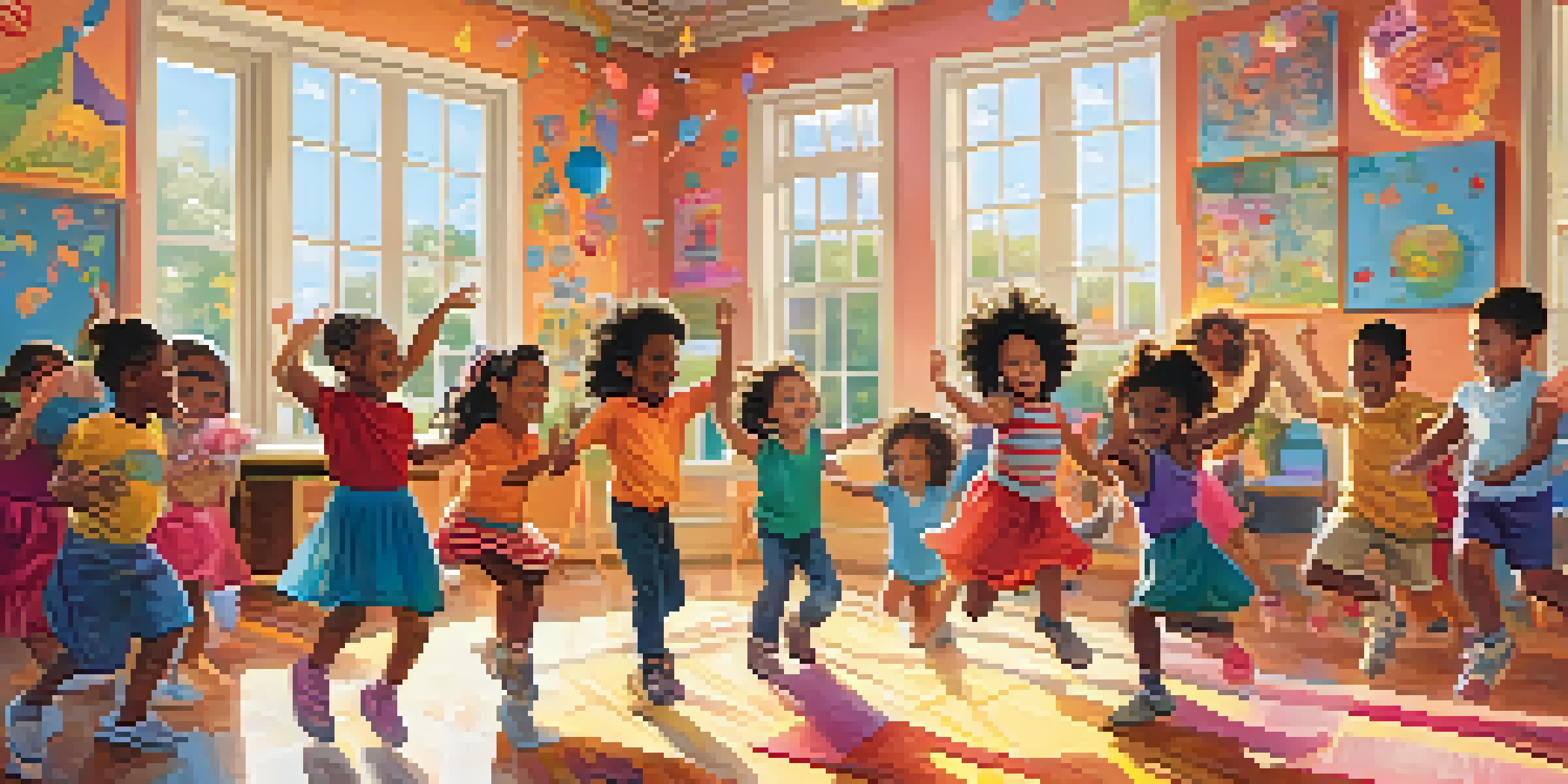Music and Movement: Enhancing Physical Development in Kids

The Importance of Physical Development in Early Childhood
Physical development in early childhood sets the foundation for future health and well-being. It encompasses not just gross motor skills, like running and jumping, but also fine motor skills, such as grasping and manipulating objects. Engaging in physical activities helps children build strength, coordination, and balance, which are crucial for their overall development. Understanding this importance can motivate parents and educators to incorporate more movement into children's daily routines.
How Music Stimulates Movement and Coordination
Music has a magical way of inspiring movement in children. When the beat drops, kids naturally want to dance, jump, or clap their hands, which enhances their coordination and rhythm. This instinctive response to music helps children develop a sense of timing and spatial awareness, making physical activities more enjoyable. By integrating music into playtime, caregivers can create a fun environment where kids feel free to explore their movement potential.
Physical Development is Crucial
Early physical development lays the groundwork for children's overall health and well-being.
Benefits of Dance for Physical and Emotional Growth
Dance is a powerful form of expression that combines music and movement, offering numerous benefits for kids. Not only does it help develop gross motor skills, but it also encourages creativity and emotional expression. Through dance, children can learn to communicate their feelings and experiences, fostering emotional intelligence. This holistic approach to physical development can lead to happier, more confident kids.
Incorporating Movement into Daily Routines
Integrating music and movement into daily routines can be simple and enjoyable. Activities like morning dance parties or singing while doing chores can make physical activity feel less like a task and more like a game. Parents can take advantage of everyday moments, like turning a walk into a musical journey with songs about nature. This not only promotes physical development but also strengthens the bond between parents and children.
Music Boosts Movement and Coordination
Integrating music into playtime naturally encourages children to move, enhancing their coordination and rhythm.
Creating a Music-Rich Environment for Kids
A music-rich environment can significantly enhance a child's physical development. This can be achieved by providing instruments, playing a variety of music genres, and encouraging free dance sessions. The more exposure children have to music, the more likely they are to engage in movement. Creating such an environment fosters creativity and allows kids to explore different ways of moving their bodies.
Using Technology to Enhance Music and Movement
In today's digital age, technology can play a significant role in promoting music and movement among kids. Apps and online resources offer interactive music games and dance tutorials that can captivate children's attention. These tools can help kids learn new dances or play instruments while encouraging physical activity. By blending technology with traditional music and movement activities, caregivers can create a balanced approach to physical development.
Community Activities Foster Growth
Participating in community activities like dance classes provides children with opportunities for physical movement and social development.
Community Activities that Promote Music and Movement
Community activities, such as dance classes or music festivals, can be excellent opportunities for kids to engage in physical movement. These events foster a sense of belonging and encourage social interactions, which are essential for emotional development. Participating in group activities exposes children to different forms of dance and music, helping them discover their interests. Such engagement not only enhances their physical skills but also builds lasting friendships.
The Lasting Impact of Music and Movement on Child Development
The benefits of integrating music and movement into children's lives extend far beyond their early years. Research shows that kids who engage in these activities tend to have better physical health, improved cognitive skills, and enhanced social interactions. The joy of movement, paired with the rhythm of music, creates a lasting impact that can influence their lifelong relationship with physical activity. By prioritizing music and movement, we are investing in healthier, happier futures for our children.